Last updated on April 21, 2024
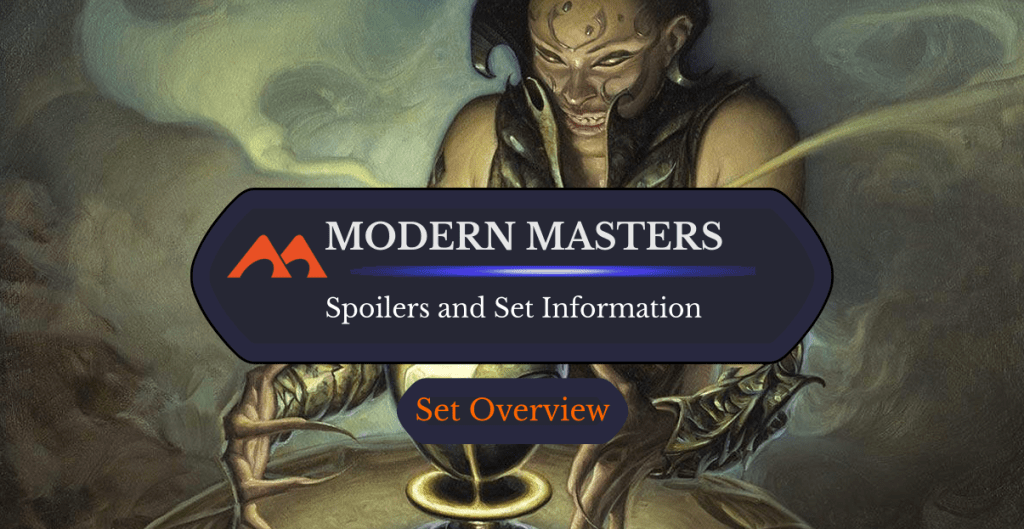
Chalice of the Void | Illustration by Mark Zug
With Modern prices going up in the last decade, WotC had some ideas to lower the format’s entry price. Modern Masters was created with the intention of reprinting old cards for Modern without introducing any new cards. Since all Modern cards should pass through Standard at a given point, WotC was having trouble feeding the format with new cards or reprints, since cards like Tarmogoyf and Cryptic Command would be too powerful for Standard (we’re talking about the 2013 MTG era, keep in mind).
The set was a huge success, and many more Masters sets came after, such as Modern Masters 2015 and Modern Masters 2017. Today we’re fondly remembering this successful experiment, talking about its mechanics, and looking and lots of good cards that saw play in Modern, Legacy, Cube, and Commander. Let’s go!
Modern Masters Basic Information
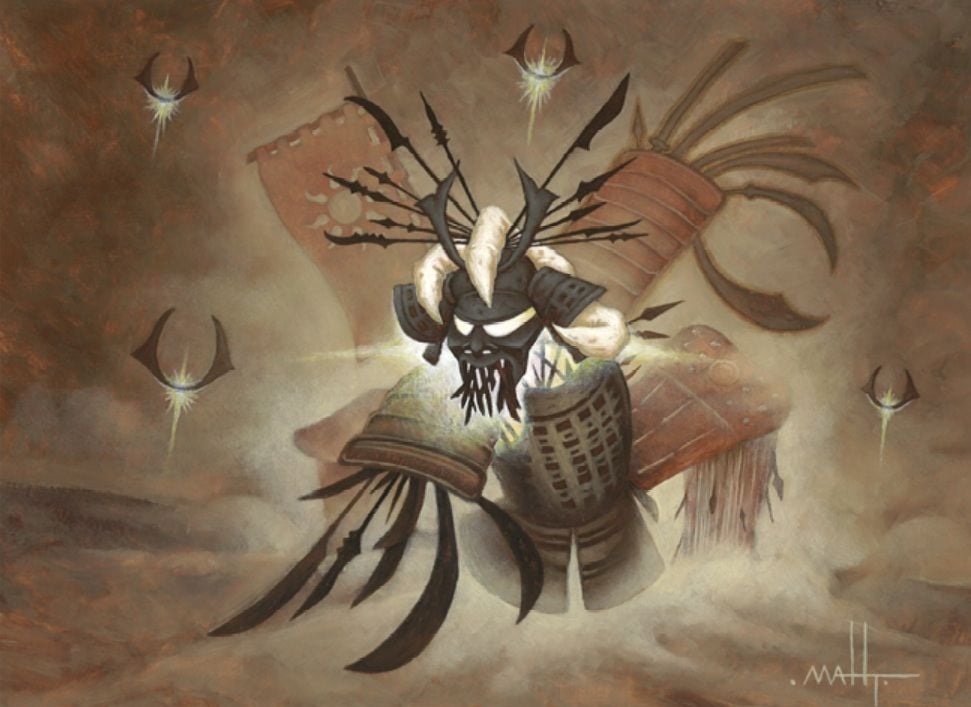
Kataki, War's Wage | Illustration by Matt Thompson
Set Details
| Set Symbol |  |
| Set Code | MMA |
| Hashtag | #MTGMM |
| Number of Cards | 229 |
| Rarities | 101 commons, 60 uncommons, 53 rares, 15 mythic rares |
| Mechanics | Affinity for artifacts, modular, prowl, tribal, changeling, suspend, storm, dredge, delve, retrace, splice onto arcane, evoke, domain, sunburst, echo, kicker, split second |
Important Dates
| Event | Date |
|---|---|
| Modern Masters release date | June 7, 2013 |
| Modern Masters Limited Grand Prix | June 22 to 23, 2013 |
| Modern Masters 2015 release date | May 22, 2015 |
| Modern Masters 2017 release date | March 17, 2017 |
About the Set
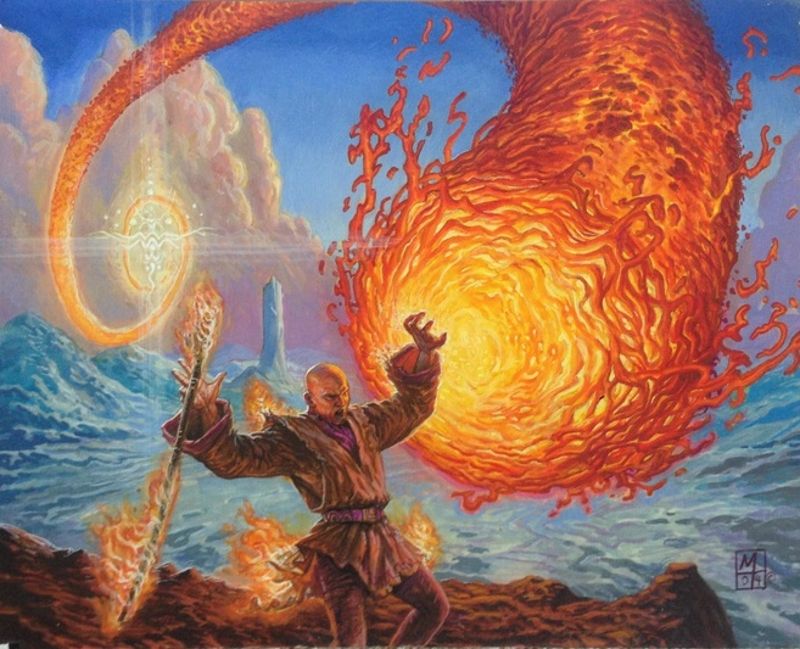
Lava Spike | Illustration by Mark Tedin
Modern Masters was released in 2013, and it was the first of a new Masters release era. Following its path came Modern Masters 2015 and Modern Masters 2017, as well as Ultimate, Iconic, and Vintage Masters amongst others (with Commander Masters to release in 2023). The Masters sets had the reprint characteristic in common, since all the cards were already released and legal in their given formats. Due to the limited printing and the premium value of the cards, Masters sets usually retail for double the price of a normal booster set. There’s a guaranteed foil in each pack too, so it’s possible to open a premium foil rare or mythic, which boosts the product price.
The rares and mythics of Modern Masters are usually aimed at Modern Constructed. The commons and uncommons target Limited play, many of them being role players in Modern, with cards like Path to Exile, Electrolyze, and Grapeshot being examples.
The set made huge shifts in rarity which would become a trend among Masters sets, such as the shift of cards like Masked Admirers, Mad Auntie, and Pardic Dragon from rare to uncommon. Cards that were deemed too powerful at common like Mulldrifter and Manamorphose became uncommons.
Another characteristic of Modern Masters is that they gave extra attention to the 2003-2008 MTG era, mainly reprinting cards from sets like Mirrodin, Lorwyn, Kamigawa, Morningtide, and Time Spiral. We’ll see that the main themes from Modern Masters are tied to those sets, like tribal synergies from Lorwyn and affinity from Mirrodin.
Set Mechanics
Being a Masters set, WotC didn’t follow the usual rules for a given set and put lots of mechanics together instead of focusing on a few. This was a trend set in Time Spiral block and became a Masters set trademark. I’ll give a brief explanation on all the different mechanics:
Affinity for Artifacts
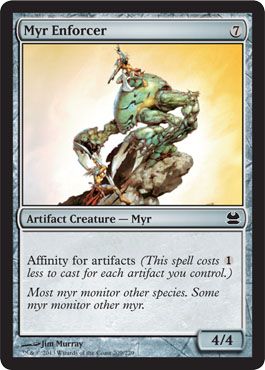
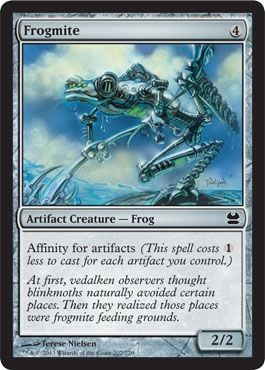
Affinity is a mechanic that makes cards cheaper the more artifacts you have, and thus if you have lots of artifacts in play, cards like Myr Enforcer or Frogmite become essentially free.
Modular
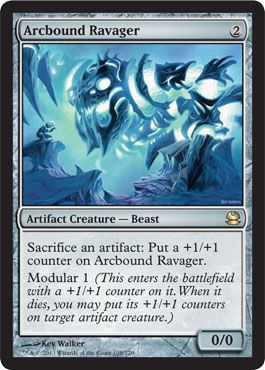
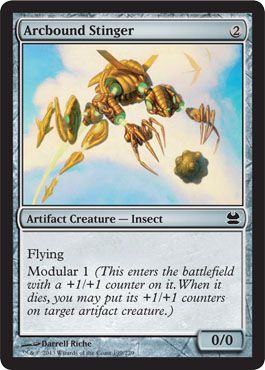
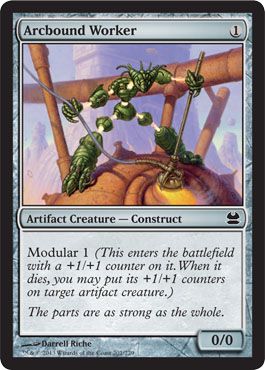
A creature with modular enters the battlefield with a few +1/+1 counters, and after it dies, all its counters are put onto another artifact creature you control. Arcbound Ravager is probably the most known card with the mechanic, having seen the most tournament play.
Prowl
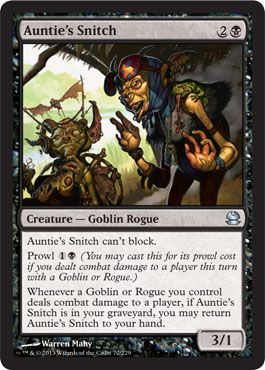
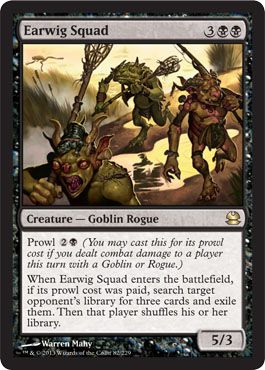
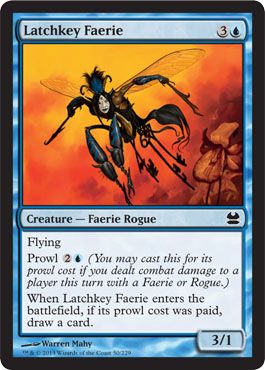
Prowl was a mechanic used in faerie tribal decks in Lorwyn, where it offered a second casting cost to creatures if you had dealt damage this turn with a faerie or a rogue. If you cast the spell via its prowl cost, you’ll get an added benefit. For example Latchkey Faerie will draw you a card if the prowl cost is paid.
Tribal


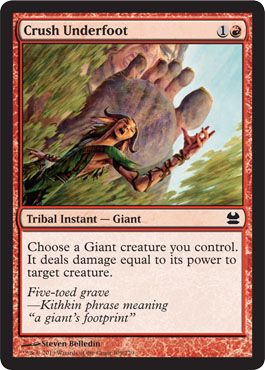
The name tribal has been used first in Lorwyn block to reference spells that count as a tribe (creature type). Peppersmoke is a faerie tribal spell, while Crush Underfoot is a giant tribal spell. Different tribes in Modern Masters include goblins, faeries, and giants.
Changeling
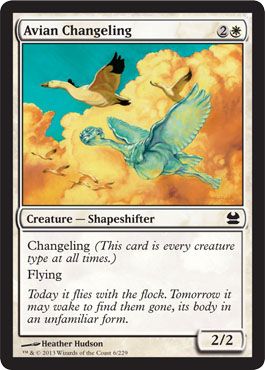

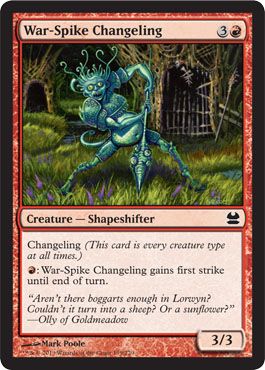
To make up for Lorwyn block having so many different tribal interactions (giants, faeries, goblins, elementals), there was a need for certain creatures to be part of every tribe at the same time, and thus the changeling mechanic was born.
Changeling gives a creature all creature types at the same time, and that helps Limited a lot, since no matter what tribal interaction you might be playing, the card will fit. Commander tribal decks benefit from this as well, like Yuriko, the Tiger's Shadow. Examples of changeling cards are Mothdust Changeling and Avian Changeling.
Suspend
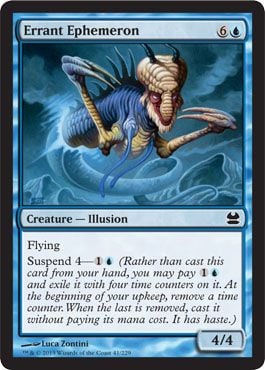
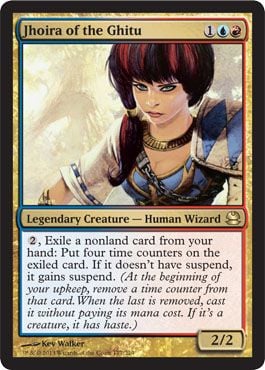
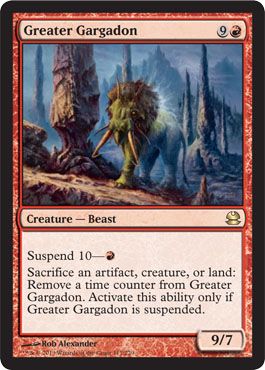
Suspend is a way to trade mana for time. Take Errant Ephemeron, for instance. It costs to cast, or it can be suspended for and four turns. While the card is suspended, you don’t have to pay anything, just wait. Cards like Jhoira of the Ghitu can suspend any card for two turns, while Greater Gargadon can speed up the process by sacrificing permanents.
It’s a very complicated mechanic in how it plays and how you teach MTG newcomers, so it's usually only present in Masters sets.
Storm
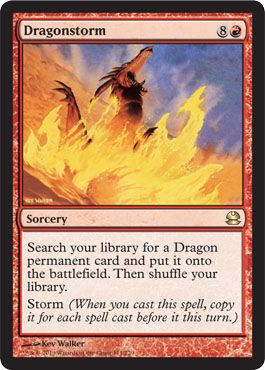
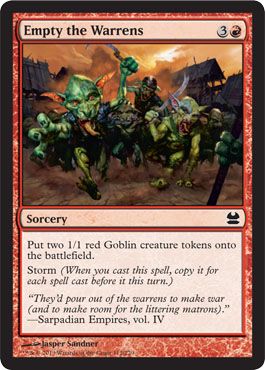
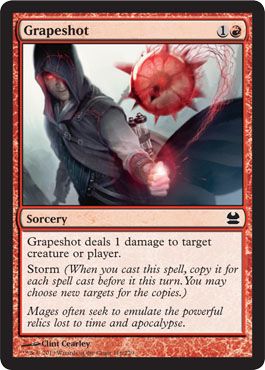
Another very interesting and combo-driven mechanic, a spell with storm will be copied for each other spell that was cast this turn, and not only yours. You're trying to cast at least two or three spells before a storm spell in order to have a good advantage, like in Empty the Warrens. The thing is, to really take advantage of storm spells like Grapeshot and Tendrils of Agony, the storm count must be very high, so these spells are game-winning when cast.
Dredge
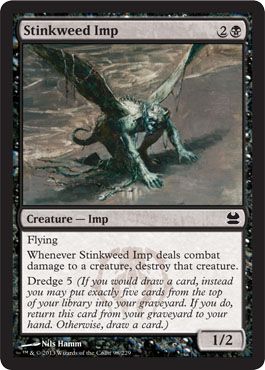
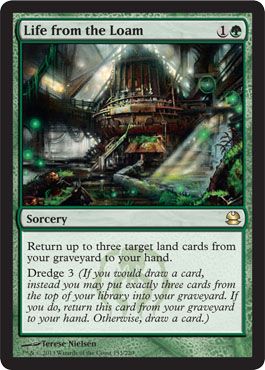
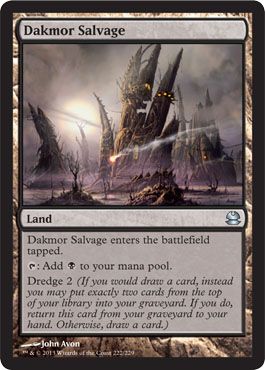
Like storm, dredge is another one of those mechanics that leads to broken combos. If you have a dredge card in your graveyard, you may mill a certain number of cards to draw it instead of drawing from your library. This leads to self-mill and abusing your graveyard to win. Modern Masters reprinted a few important dredge cards in Stinkweed Imp and Life from the Loam.
Delve
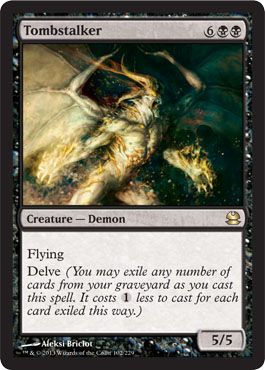
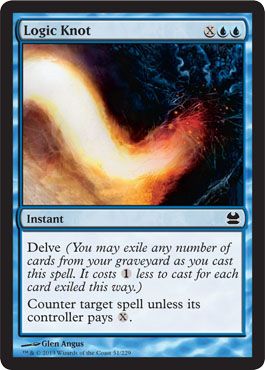

Speaking of broken mechanics, here's another one: delve. Before Khans of Tarkir, delve only existed on three cards: Tombstalker, Logic Knot, and Death Rattle, all of which were reprinted in Modern Masters. Delve is an alternate way to cast a spell by exiling cards from your graveyard instead of paying . Although these three are somewhat fair cards, WotC learned a lesson the hard way of not printing card draw in delve spells like Treasure Cruise, since those are really problematic.
Retrace
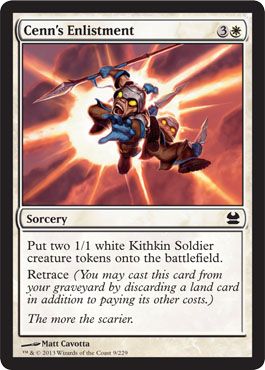
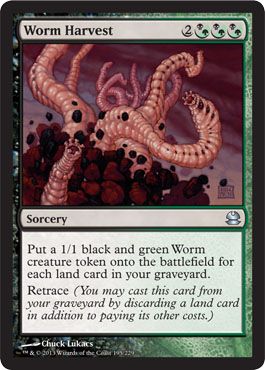
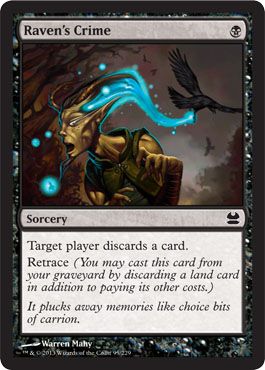
Retrace is a way of casting the same spell over and over from your graveyard by discarding a land in addition to paying the mana cost of the card. Famous examples are Cenn's Enlistment and Worm Harvest.
Splice Onto Arcane
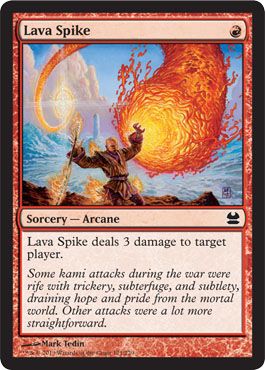
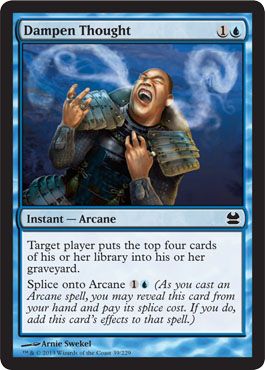
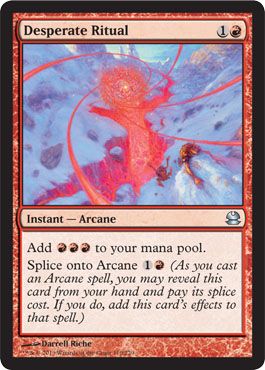
Splice allows you to add the spell from a splice card onto another card that's been cast by paying the splice cost. First you need to cast an arcane spell like Lava Spike, for example. Before Lava Spike resolves, you'll pay the splice cost of a card in your hand and add to the effects of Lava Spike. Dampen Thought is a famous example of this mechanic; every time you cast any arcane spell, you'll pay a few extra blue mana and have the opponent mill four cards. The most important thing here is that you don't need to cast the spell, so it’ll remain in your hand to repeat the process.
Evoke
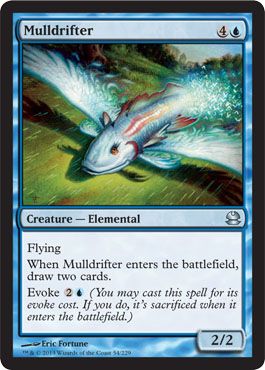
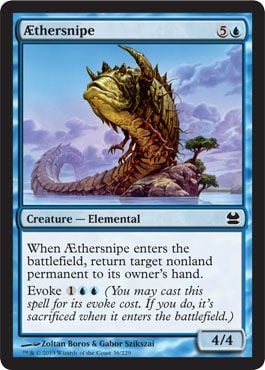
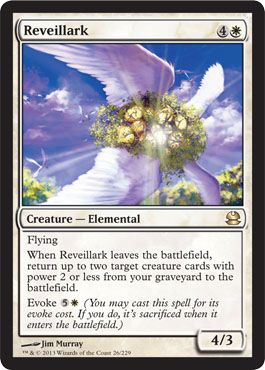
Evoke is an alternate casting cost where you have to sacrifice your creature as soon as it enters the battlefield, so you only get its ETB and LTB abilities. So, Mulldrifter can give you two cards for , or it can be a 2/2 flyer with the same benefit for . Aethersnipe has also become a staple for every Masters set.
Domain
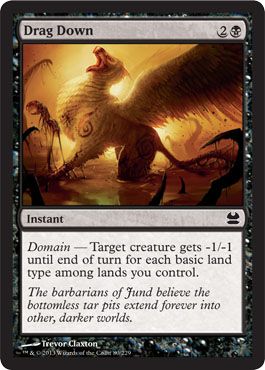
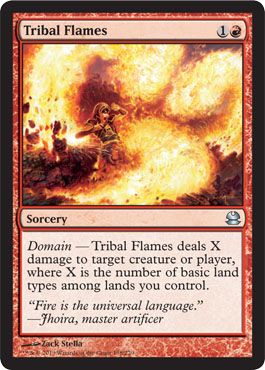
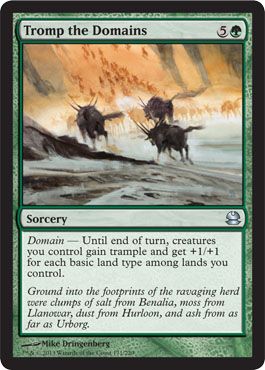
Domain gives you a benefit based on the number of basic land types you control. It's an incentive to play lots of different lands, since you'll get more powerful spells on average. Examples of this mechanic are in Tromp the Domains and Tribal Flames.
Sunburst
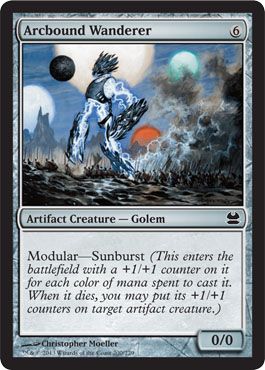
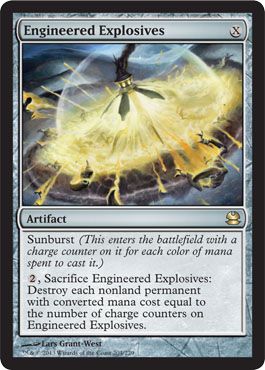
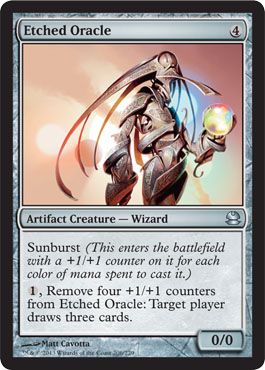
Sunburst is similar to domain, but it only cares about the colors of mana used to cast the spell and not the land types you own. So, sunburst is good with Azorius Signet, since it produces two different colors of mana, while domain is good with Hallowed Fountain. Here we have Engineered Explosives and Etched Oracle as examples.
Echo
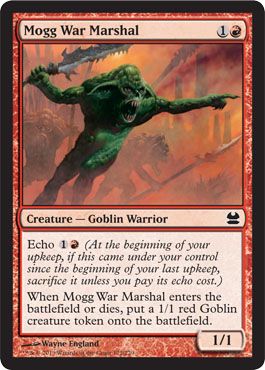
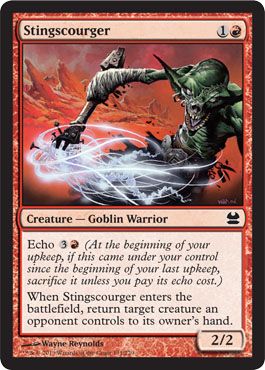
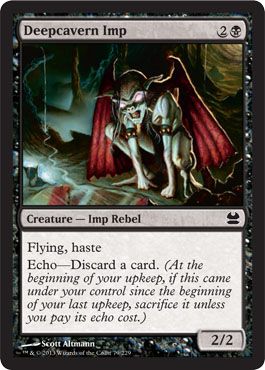
Echo is a way to obtain a more efficient card by paying the cost in two steps. First you pay the spell cost, and after that if you still want the card around, you'll need to pay the echo cost or else it's sacrificed. Good examples of echo are Mogg War Marshal and Stingscourger, where you have to pay the echo cost to keep the creature one turn after you’ve cast it.
Kicker
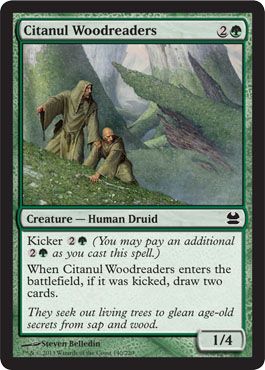

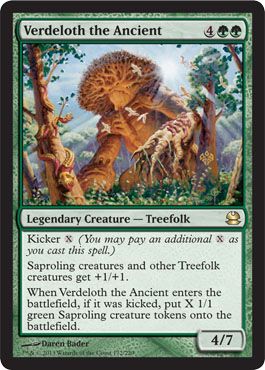
Kicker is a universally liked mechanic because you have two options. Either pay the regular spell cost, or pay more and get more benefits. In this set we have Verdeloth the Ancient which will produce many tokens if kicked, and Citanul Woodreaders, which draws you two cards.
Split Second
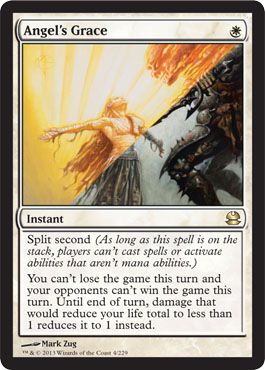
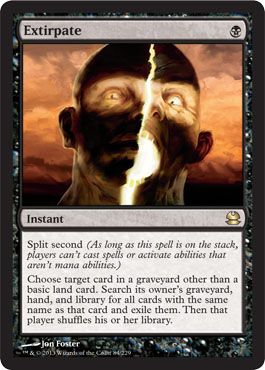
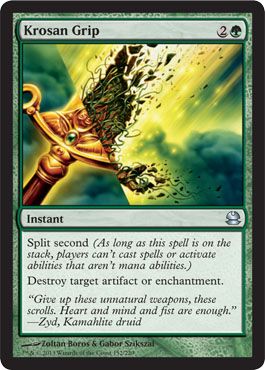
Spells with split second can’t be responded to, so you can be sure they’ll resolve, even in the face of counterspells. Examples are Angel's Grace, a card that prevents you from losing in that given turn, and Extirpate, a classic card to fight combo decks.
Modern Masters Full Card List
White
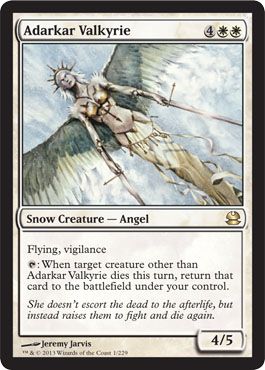
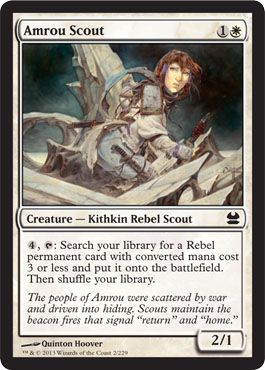
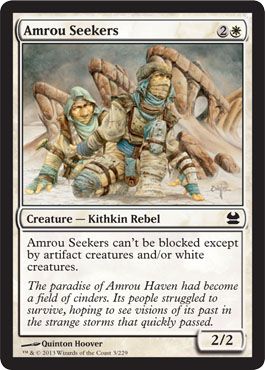

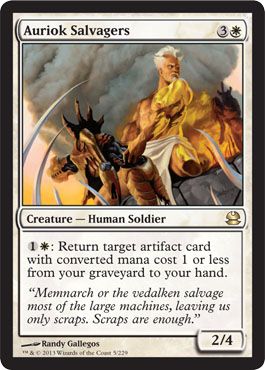

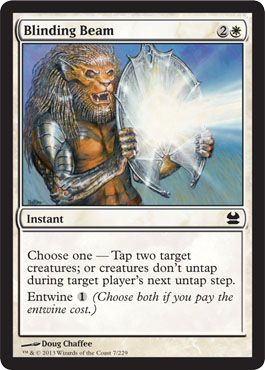
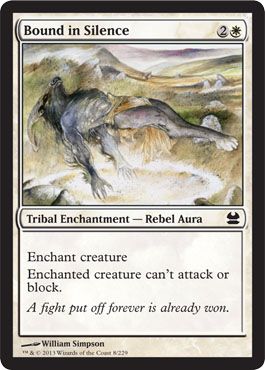

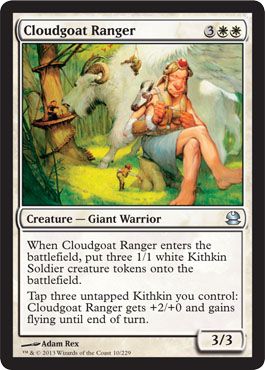
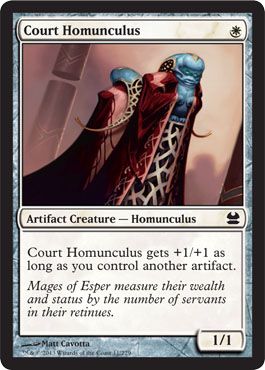
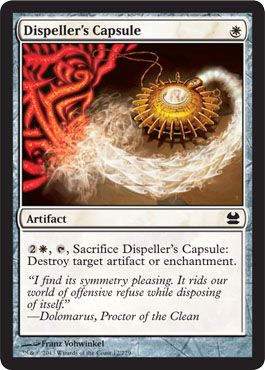
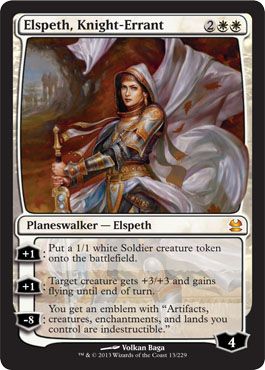
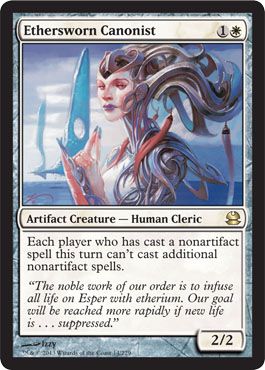
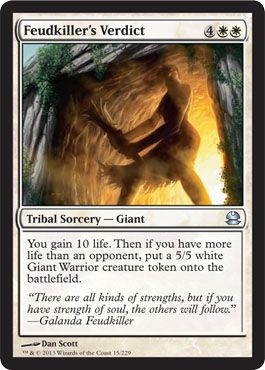
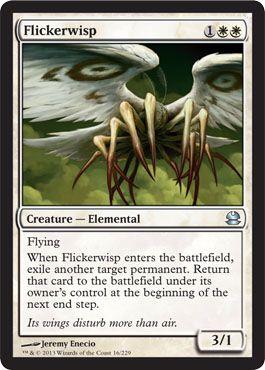
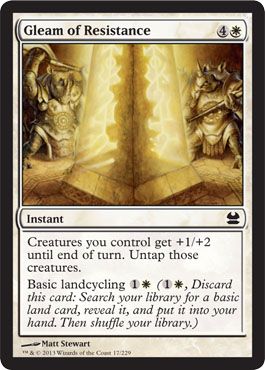
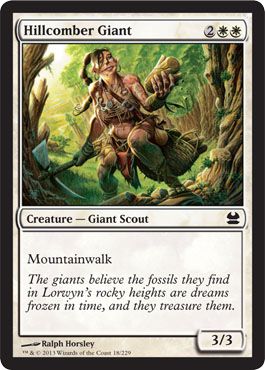
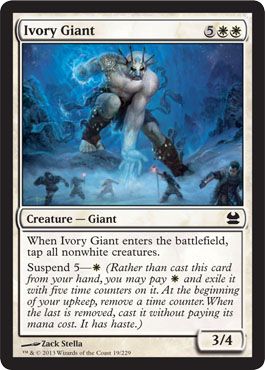
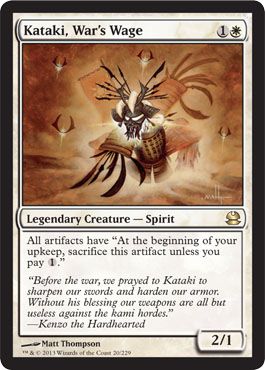
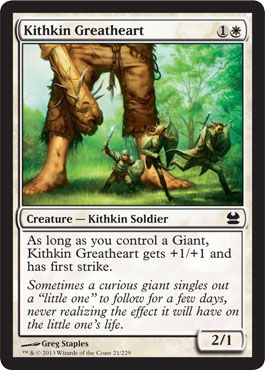
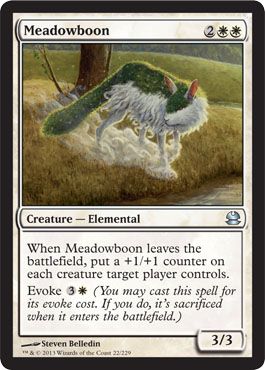
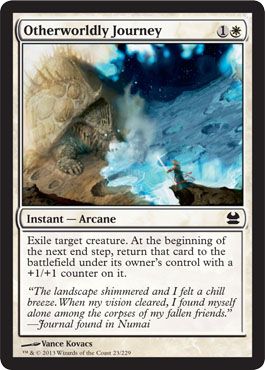
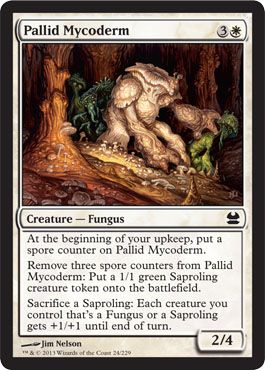
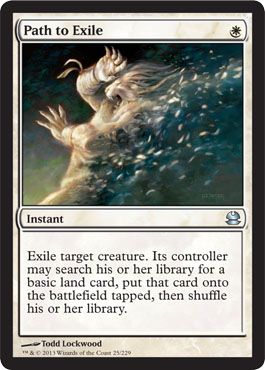

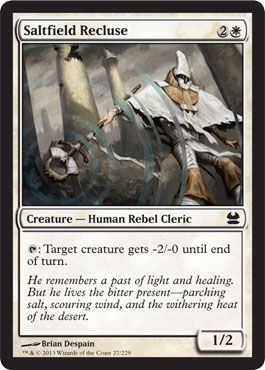
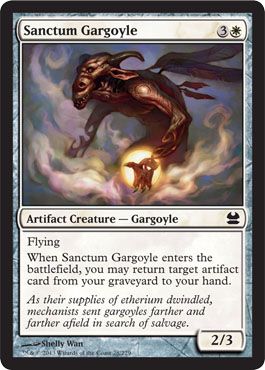
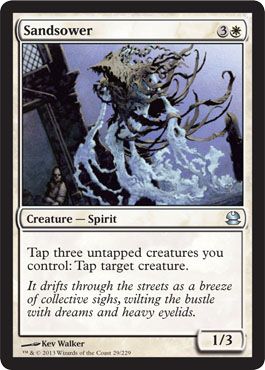
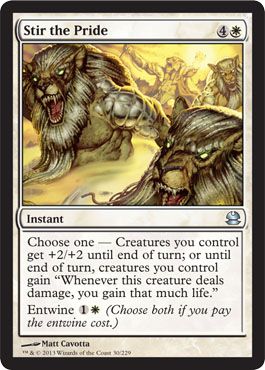
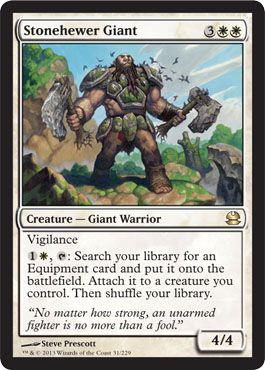
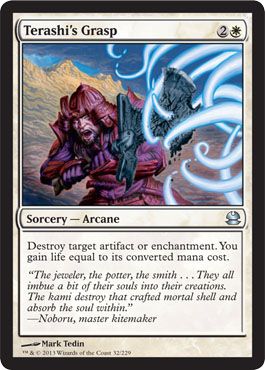
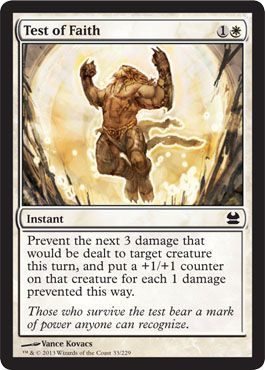
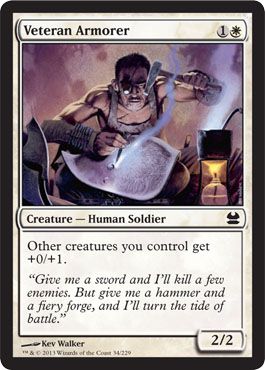
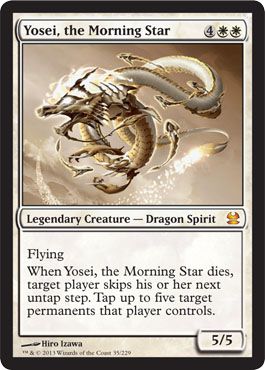
Blue


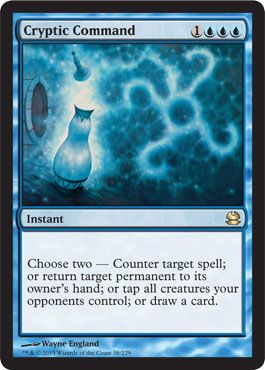

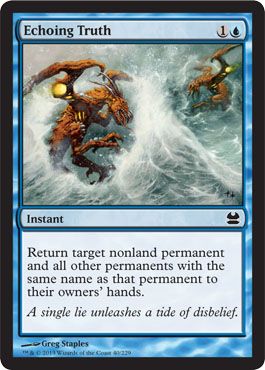


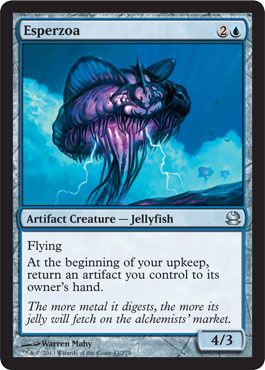


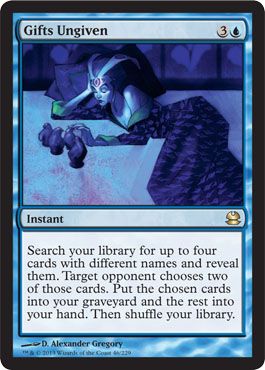
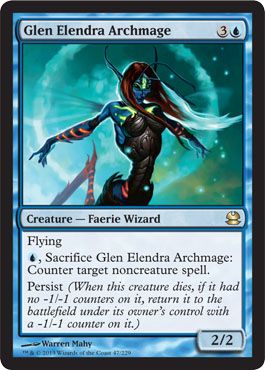
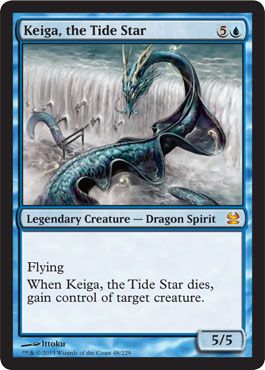
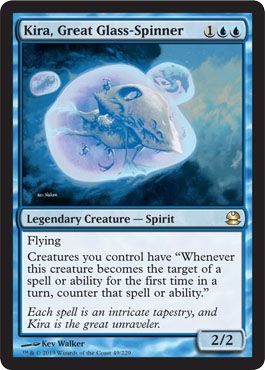


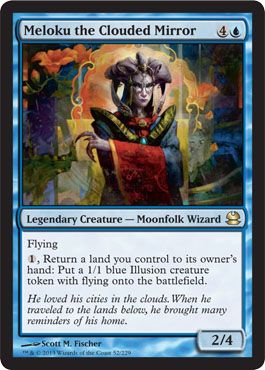


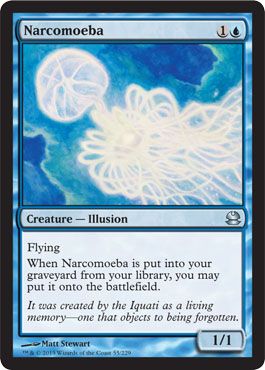

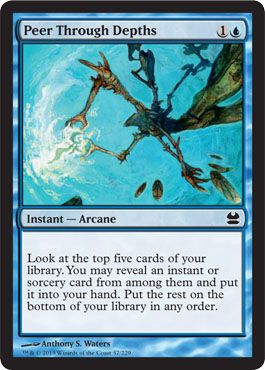
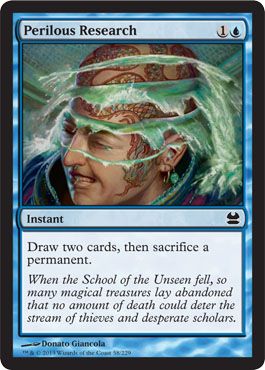
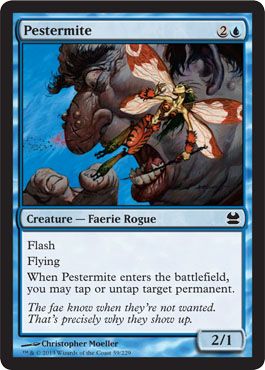
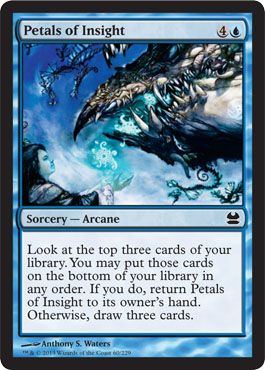
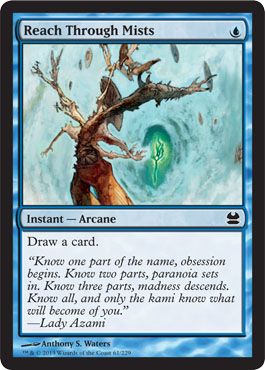
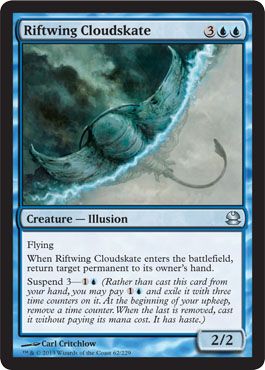
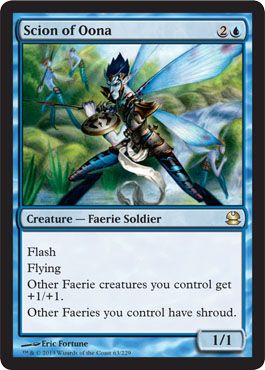
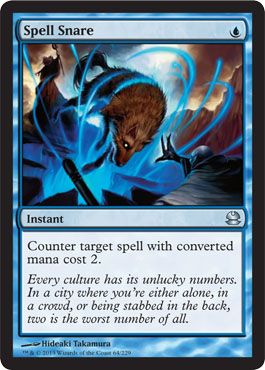
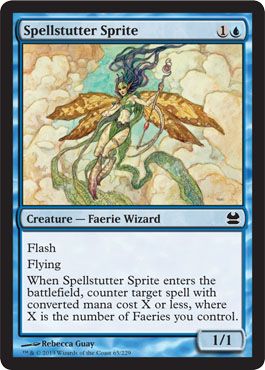
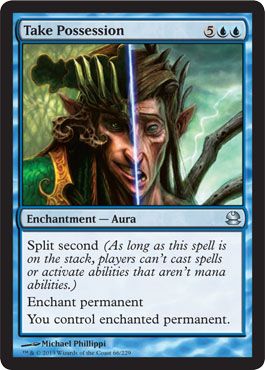
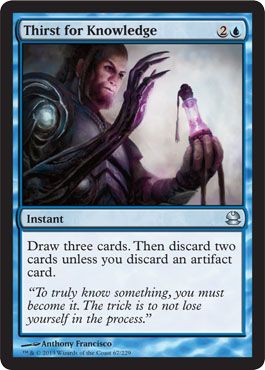
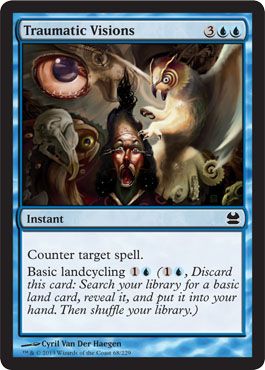
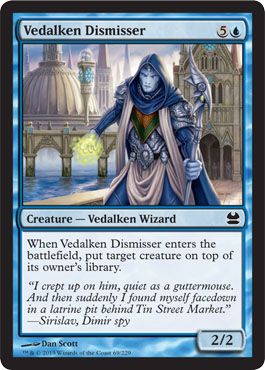
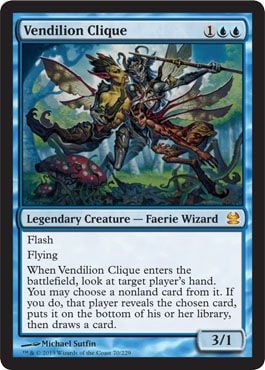
Black
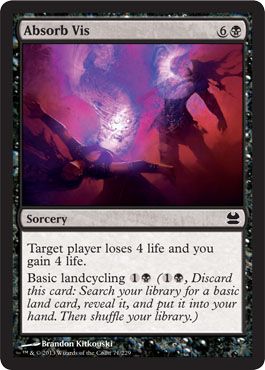

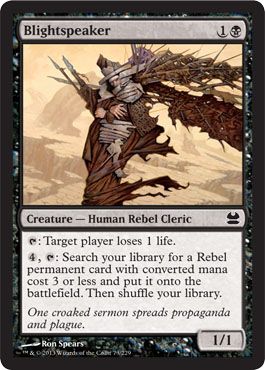
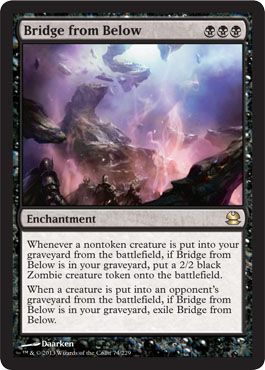
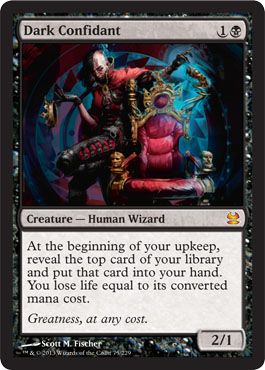
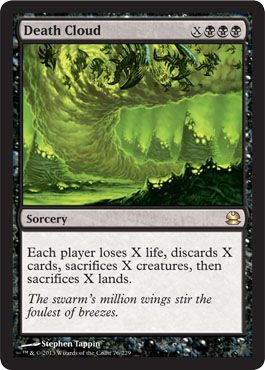
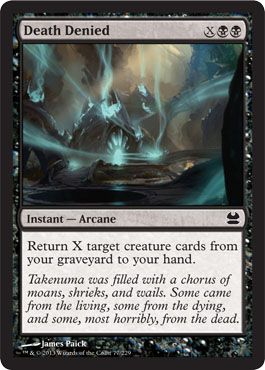



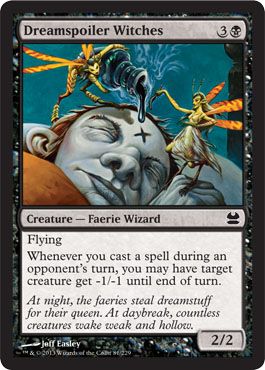

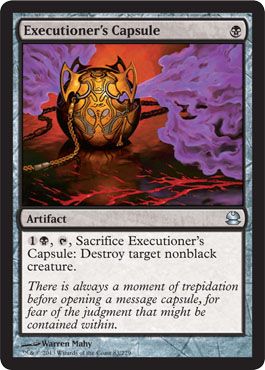

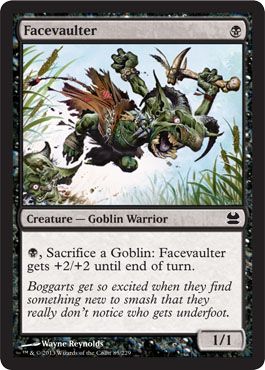
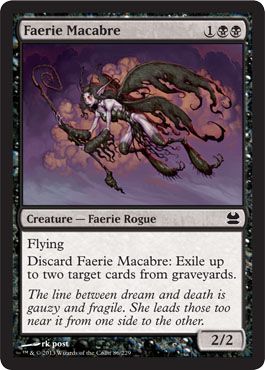
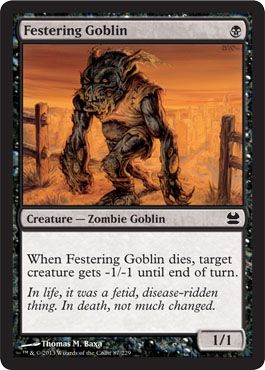
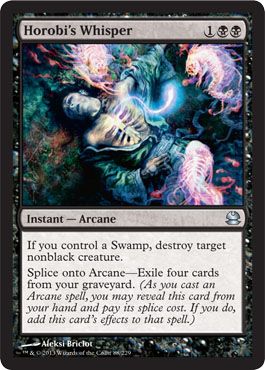
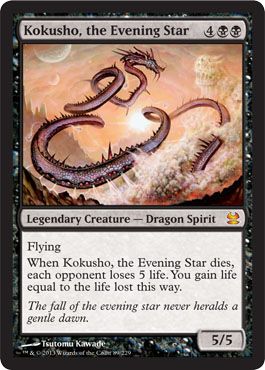
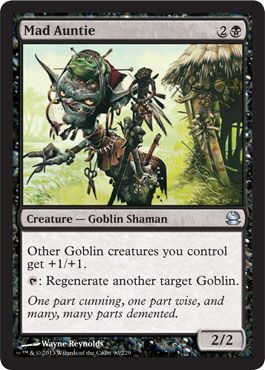
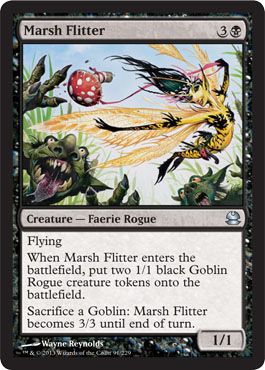

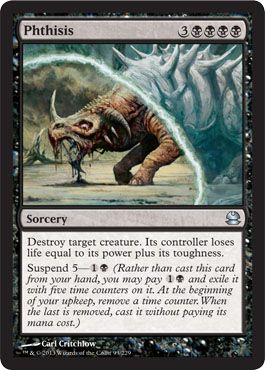
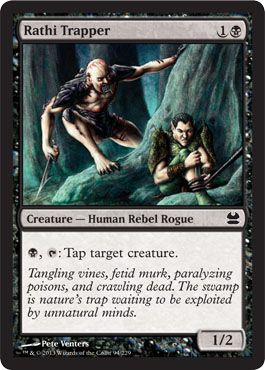

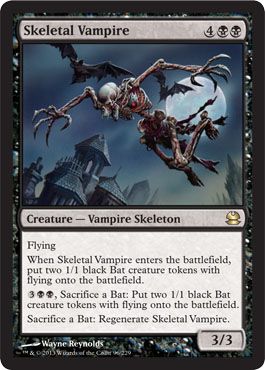


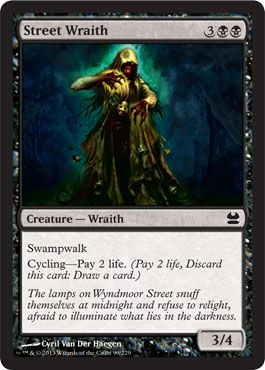
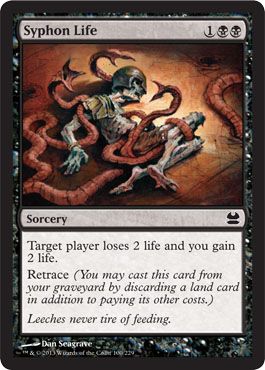
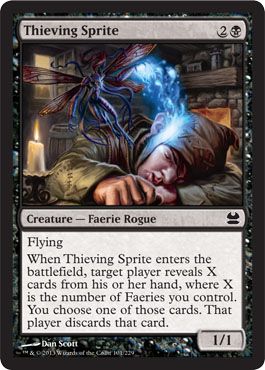

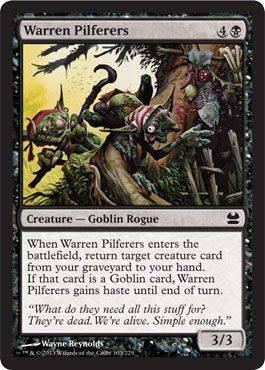

Red
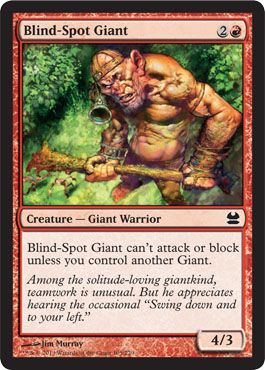
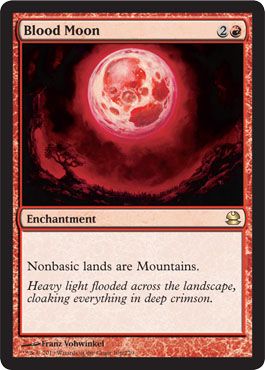






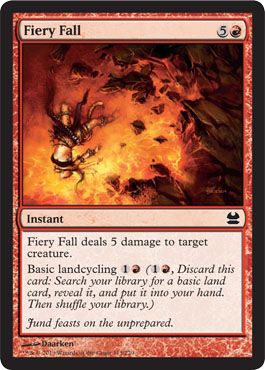
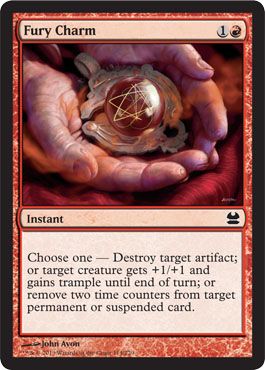
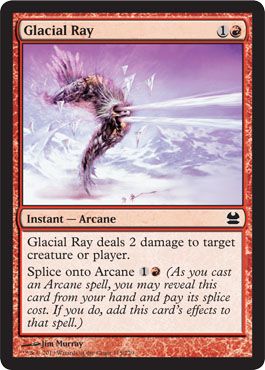


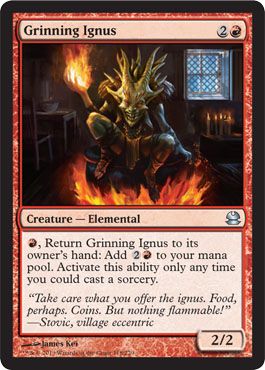
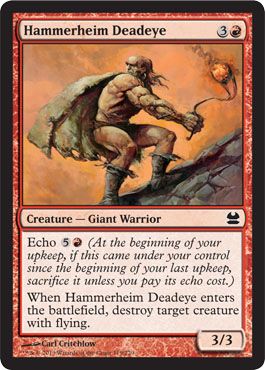
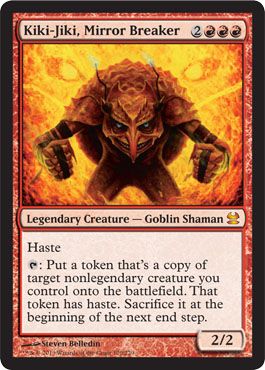



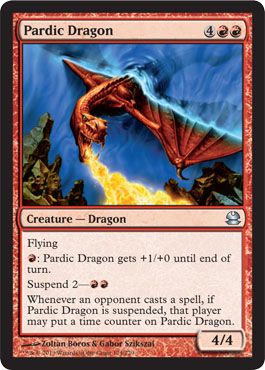
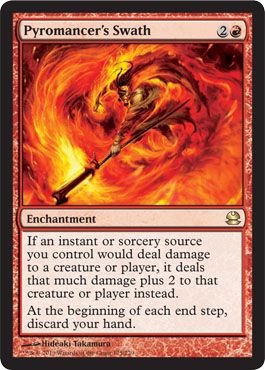
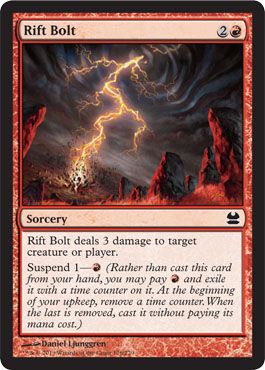
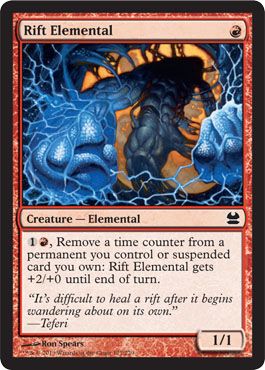
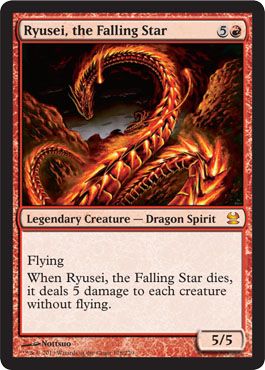
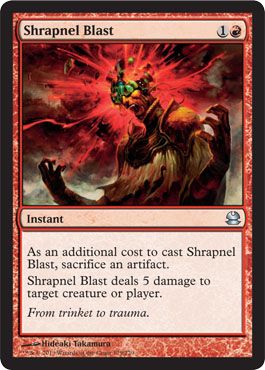
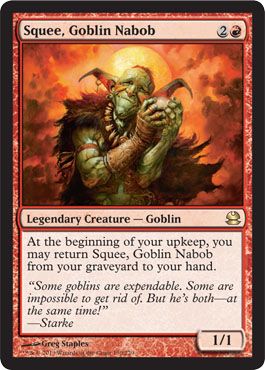

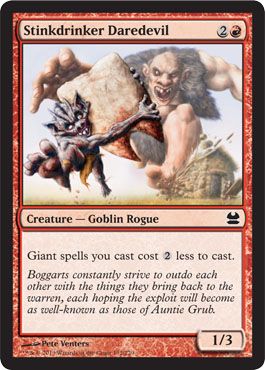
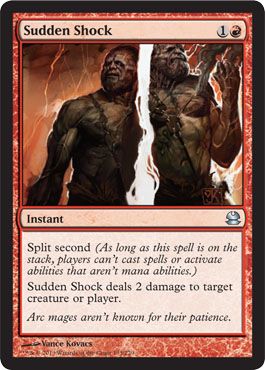
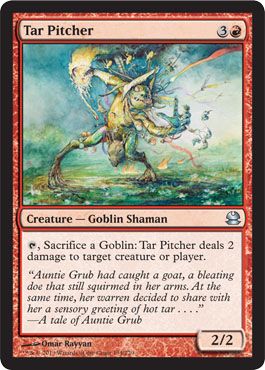
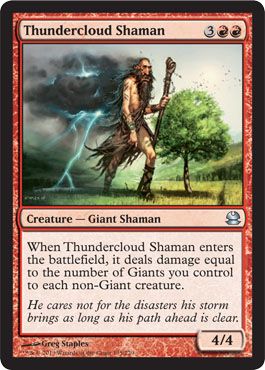
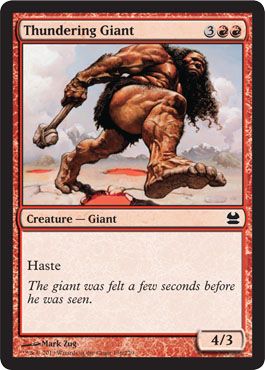
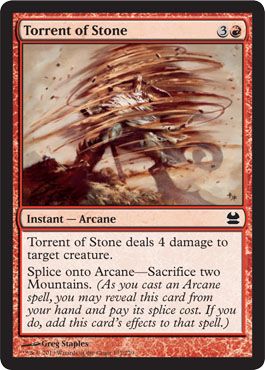


Green

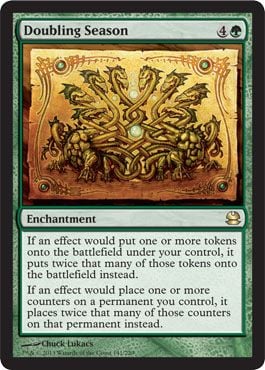

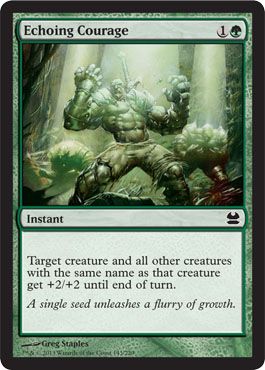

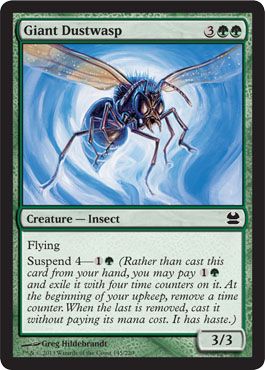
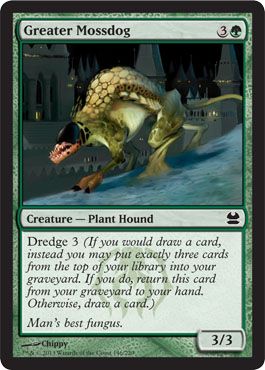

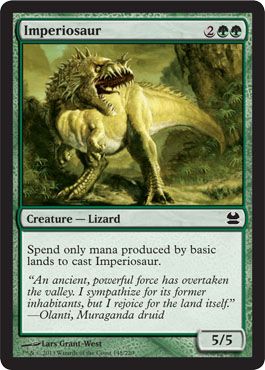
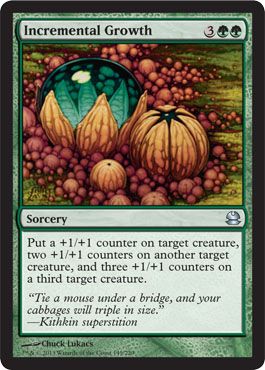
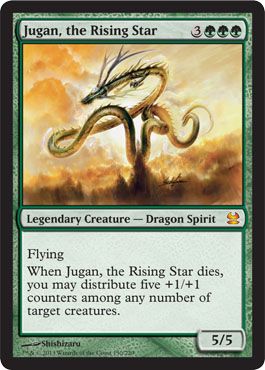
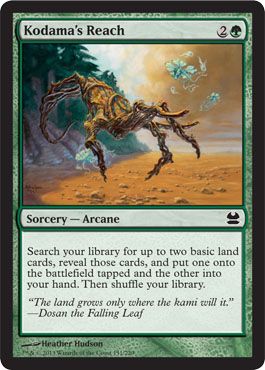


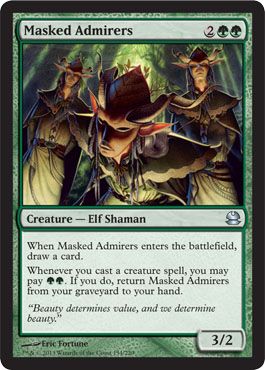

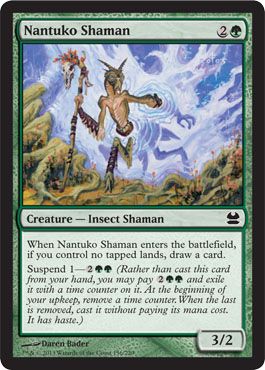
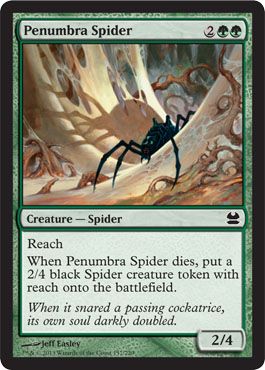
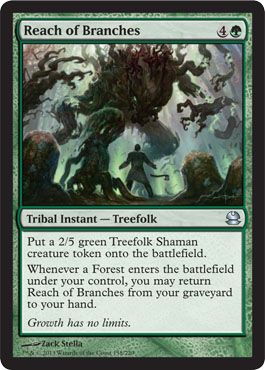
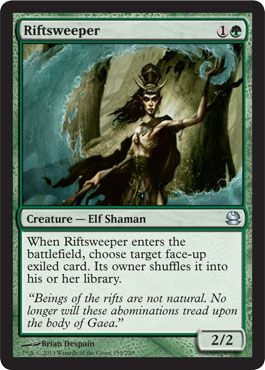
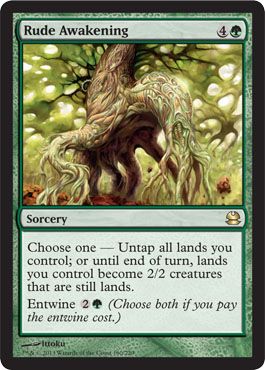
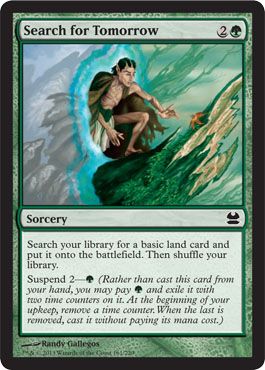
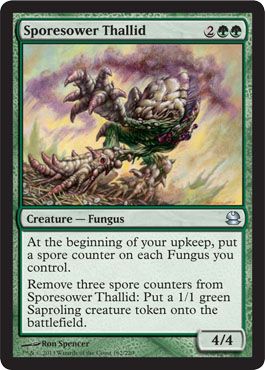
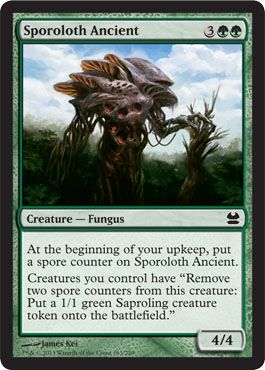
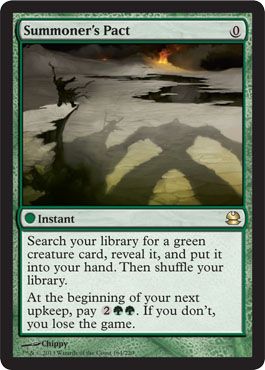

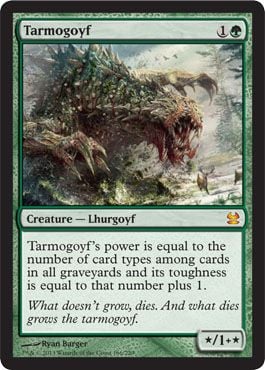
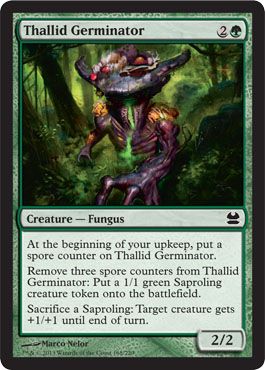
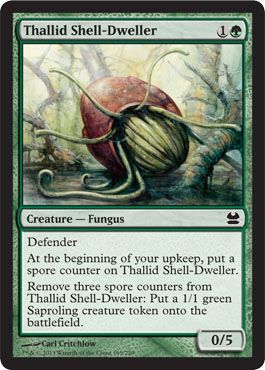
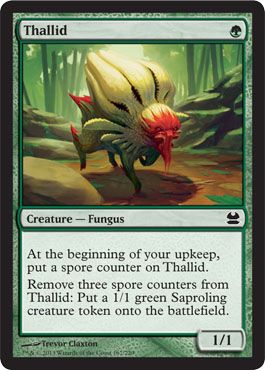
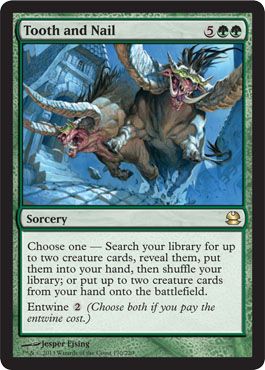


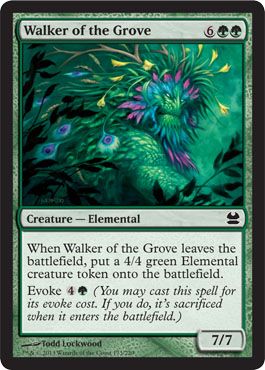
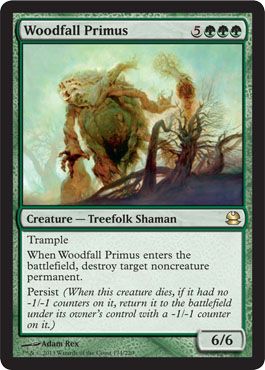
Multicolored
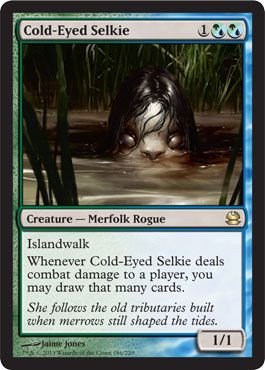
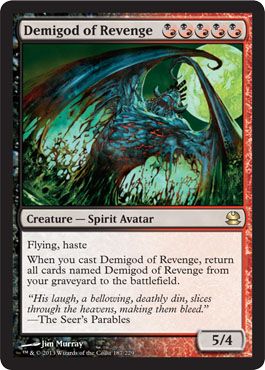
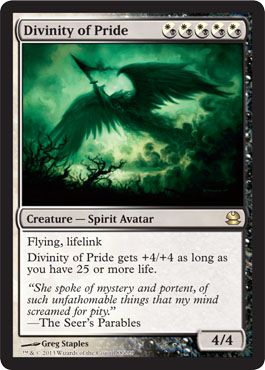
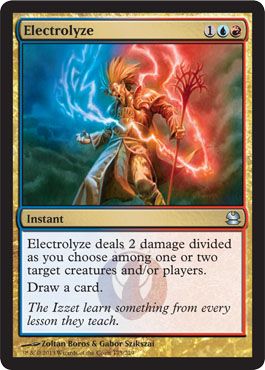
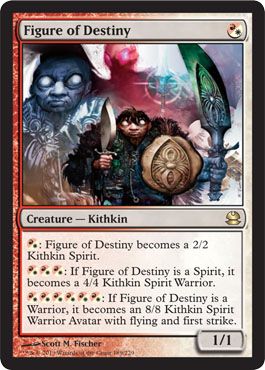
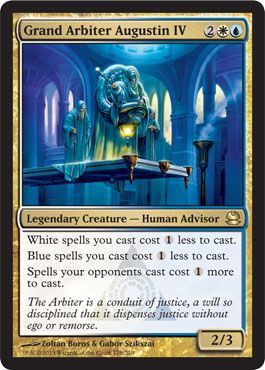

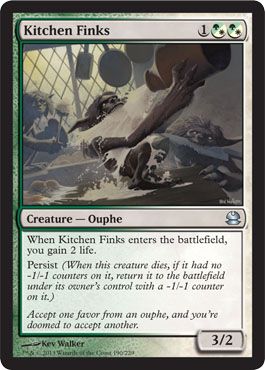
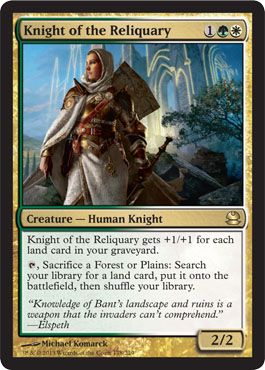
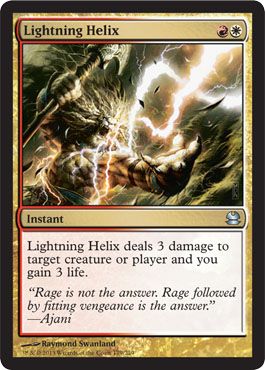
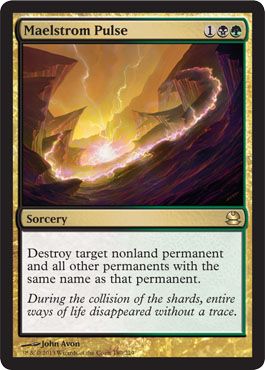
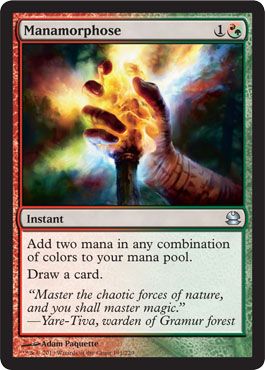
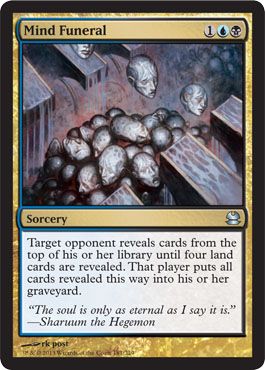
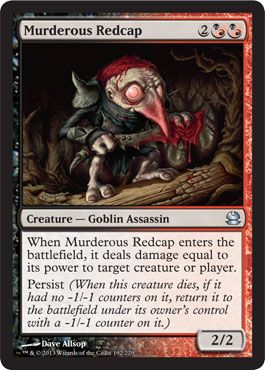
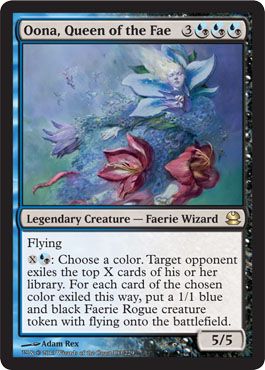
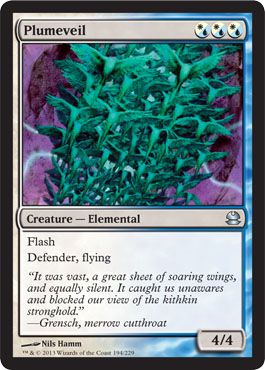
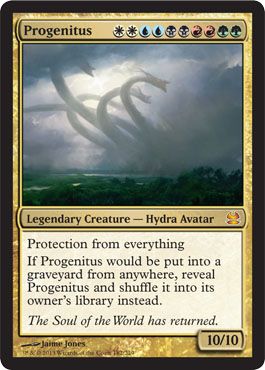
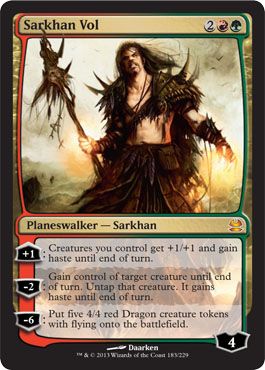
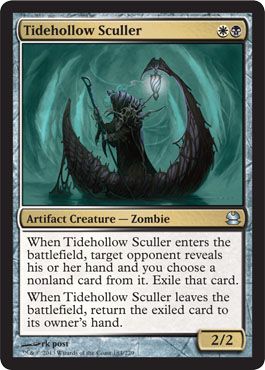
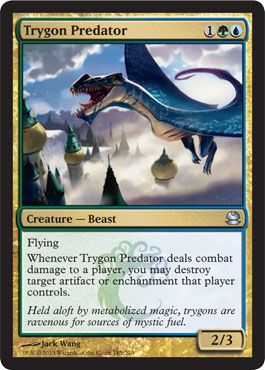

Colorless
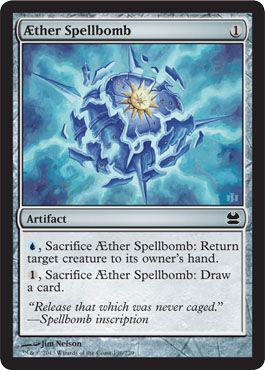
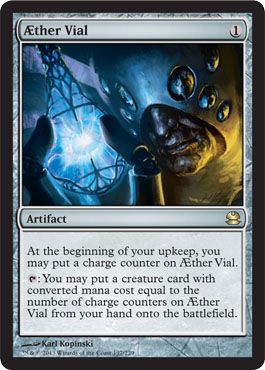




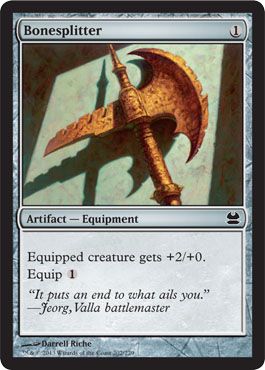
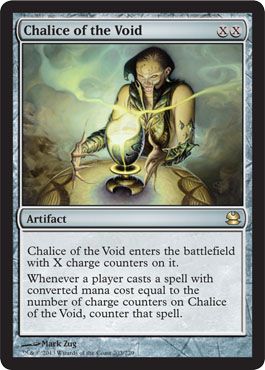

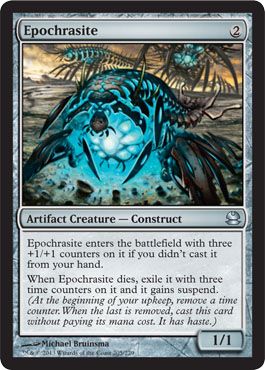


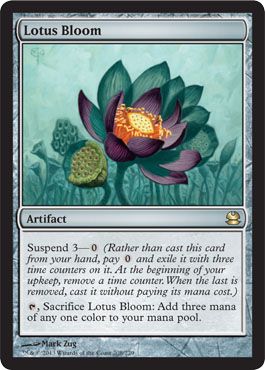


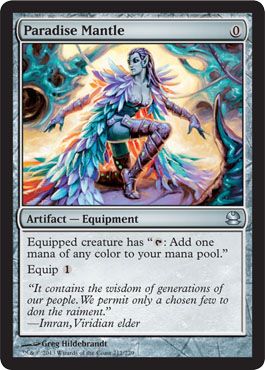
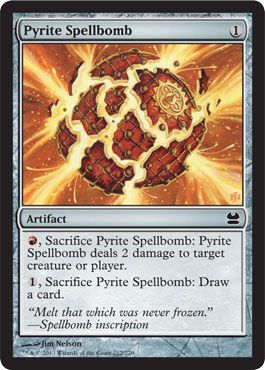
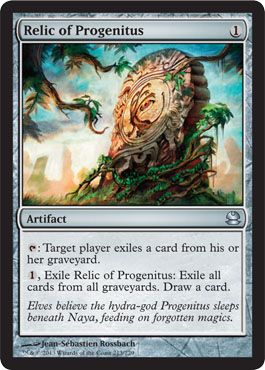
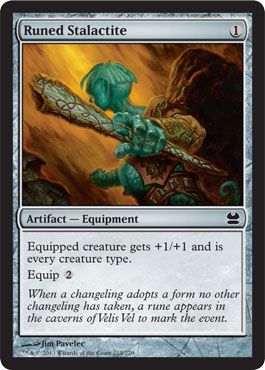
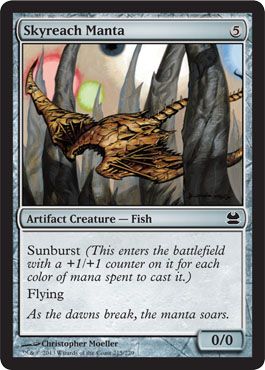


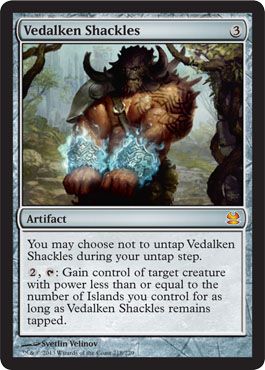
Lands
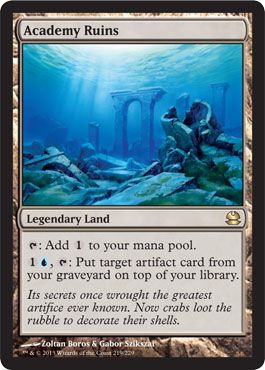
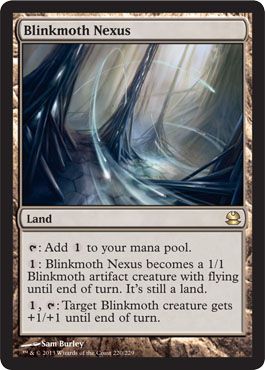



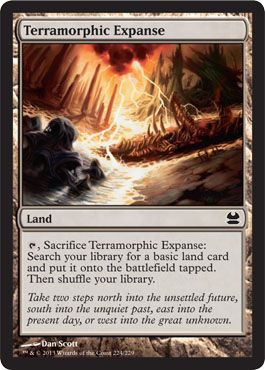
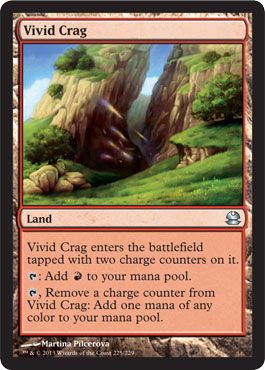
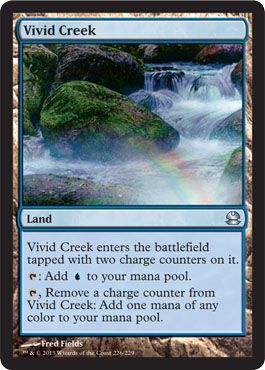
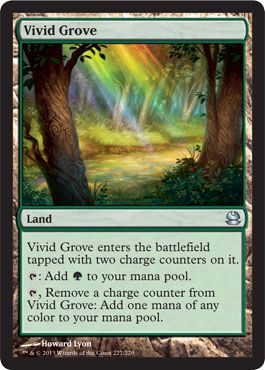
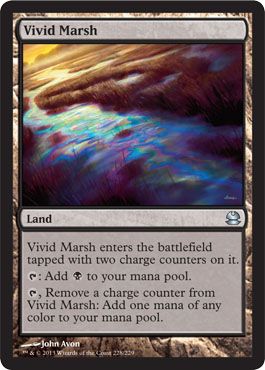
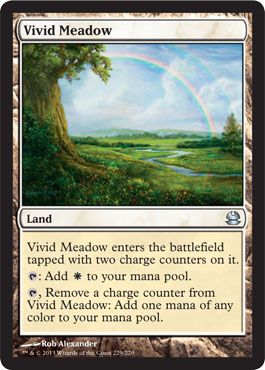
Notable Cards
Since this is a reprint set, there’s a lot of notable cards, and a bunch of good cards didn’t make the list.

Ethersworn Canonist is a staple of artifact decks and stax decks in cEDH since it disrupts opponents.

Kataki, War's Wage is a creature that’s played to fight affinity decks that swarm the board with artifacts.

Path to Exile is one of the best spot removal spells ever printed.

Reveillark is a way to get small creatures from the graveyard to the battlefield.


Pact of Negation and Cryptic Command are staple counterspells.

Vendilion Clique was one staple win condition for control, since you could flash it in, get information from your opponents, and even disrupt combos.

Blood Moon is one of the best ways to ruin enemy mana bases, especially 4+ color ones.


Grapeshot and Empty the Warrens are staple storm win conditions.

Kiki-Jiki, Mirror Breaker is a famous combo piece that goes infinite with cards like Pestermite or Deceiver Exarch.

Tribal Flames is one of the few ways to deal five damage to a player by paying only two mana.

Bridge from Below was banned in Modern because Hogaak, Arisen Necropolis decks were too powerful.

Dark Confidant was a 2-drop staple in black until power creep got to it.

Stinkweed Imp is one of the few cards with dredge 5, and in a dredge deck, the more, the merrier.

Doubling Season is probably green’s biggest EDH staple, since it doubles tokens and counters and allows people to cheat on planeswalker loyalty counters.

Life from the Loam is one of the best ways to recur lands and abuse certain self-mill and dredge effects.

Summoner's Pact is a free green creature tutor.

Tarmogoyf is one of the best and most efficient 2-drops ever printed.

Tooth and Nail is a hell of a payoff for getting to nine mana since you’ll tutor two creatures that can win the game for you.

Knight of the Reliquary is a big dumb guy that also has synergies with land tutoring.

Manamorphose is a storm staple since it's a free spell in every way by giving you back a card and two mana.

Aether Vial is an artifact that’s used to cheat on mana and give your small creatures flash and uncounterable.

Arcbound Ravager is a hell of a card in Constructed affinity/metalcraft decks.

Academy Ruins is a land that recurs artifacts to be used again.

Chalice of the Void is a way to avoid getting combo’ed, since you can set Chalice on zero or one and avoid those cheap spells from your opponents.

Dakmor Salvage is a land that also dredges, and there’re lot of applications there.

Relic of Progenitus is still one of the best graveyard hate effects.

Sword of Fire and Ice is a tried-and-true Constructed level equipment, as you’re getting lots of benefits when dealing combat damage.
Available Products
As a supplemental product, there aren’t many ways to get Modern Masters. Nowadays sets have their collector boosters, set boosters, and Commander precons, but at that time there were only boosters and booster boxes.
Booster Packs
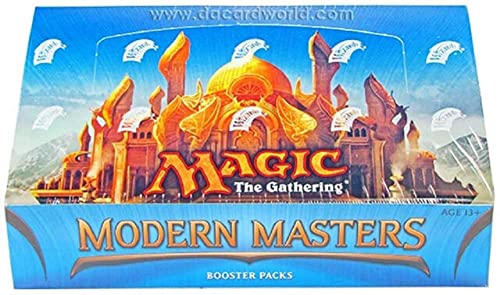
Modern Masters was sold in traditional booster packs, what we today call draft boosters. Modern Masters boosters have 10 commons, 3 uncommons, a rare, and a foil card of any rarity. Those booster packs sold individually for $6.99 instead of the regular $3.99 due to limited print supply and the fact that there’s a higher average quality of cards, especially rares and mythics.
Modern Masters was sold in 24-booster booster boxes to host a single draft. Later Masters sets adopted the standard 36-pack booster box format, but Modern Masters was an experiment on WotC’s part, so they changed things here and there.
Wrap Up

Glimmervoid | Illustration by Lars Grant-West
Modern Masters is a set that I remember fondly. The innovation at the time was very welcome, and cards got a big reduction in price, although some of them quickly raised their price again.
Today we have several supplemental products that reprint staples here and there and secret lair stuff, but Modern Masters was the first. Oh, and the Limited was very nice and innovative too. It’s a rare product nowadays, but if you have the opportunity to draft it, don’t pass up on it.
What are your best experiences with Modern Masters? Please tell me in the comments below or in the Draftsim Discord.
Thanks for reading, and until next time!
Note: this post contains affiliate links. If you use these links to make a purchase, you’ll help Draftsim continue to provide awesome free articles and apps.
Follow Draftsim for awesome articles and set updates:
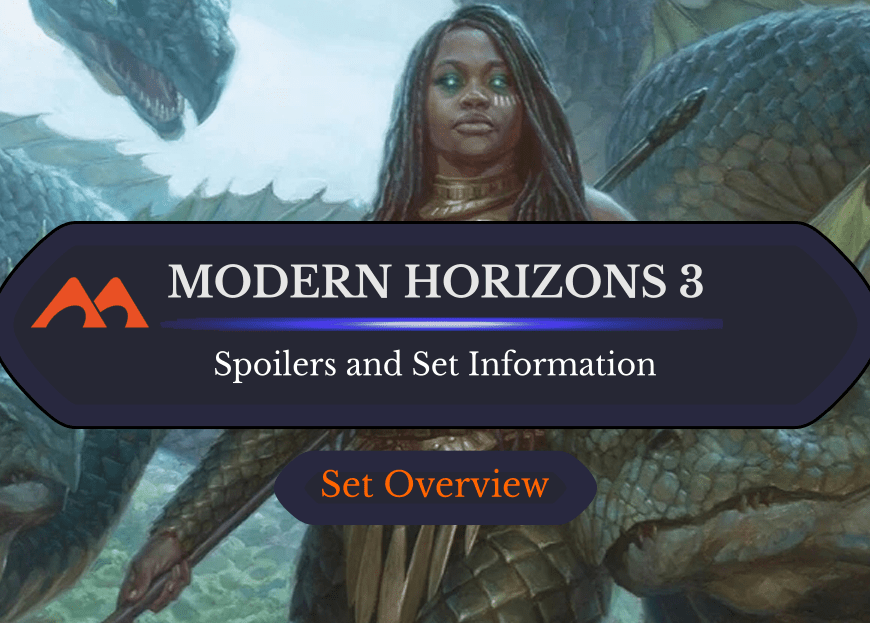
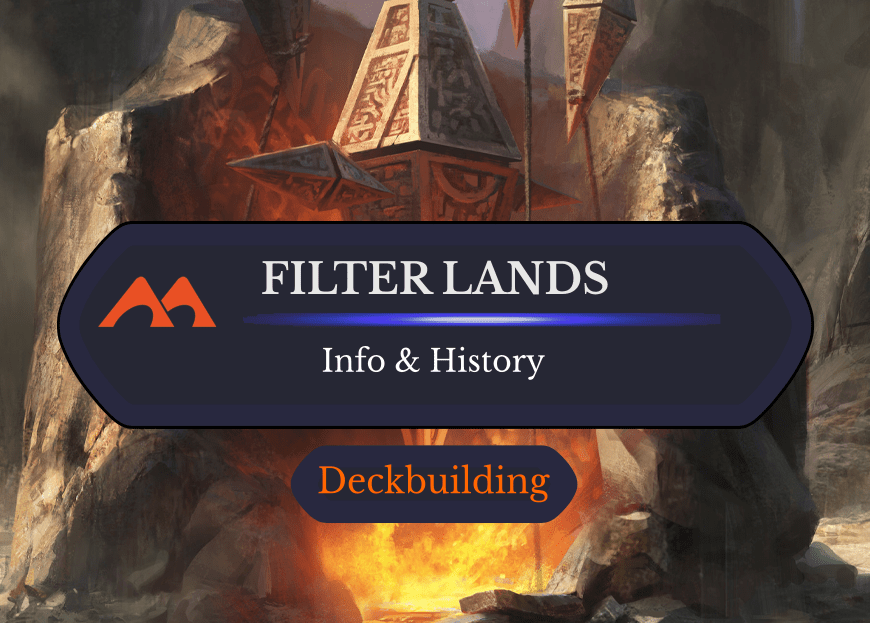
Add Comment